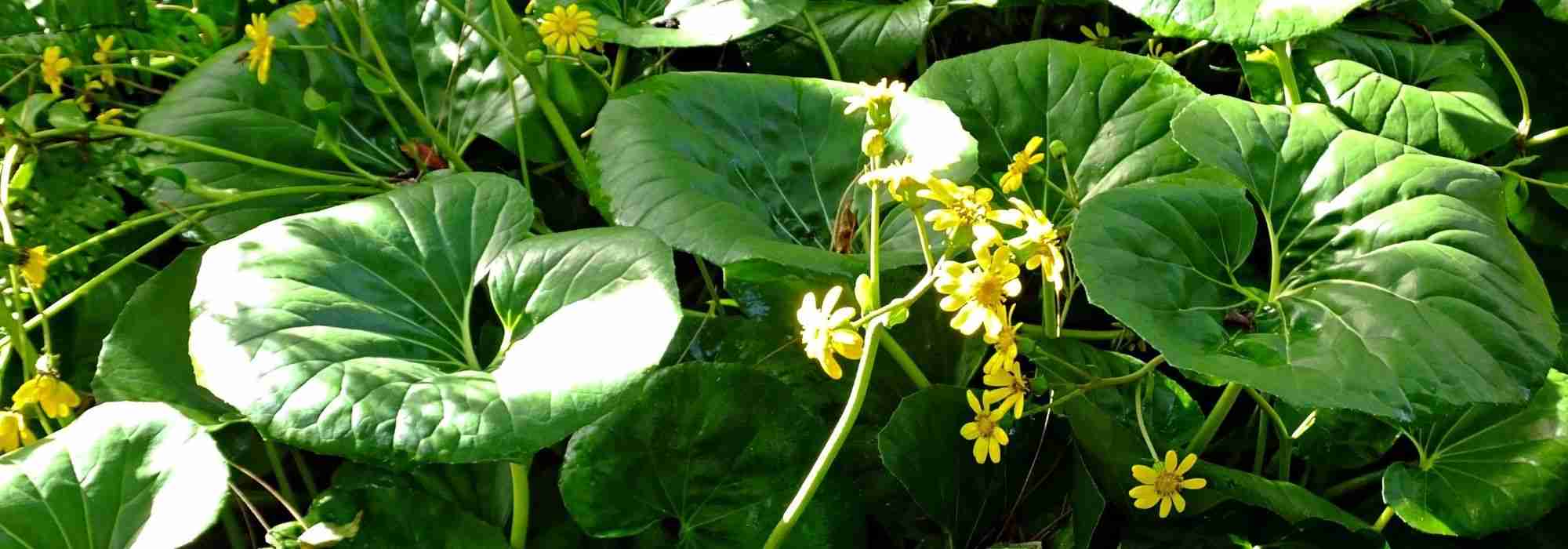
Farfugium japonicum: planting, growing, and care
Contents
Farfugium in a nutshell
- Farfugium are Asian perennials that grow in wet meadows or along waterways
- They are primarily cultivated for their highly ornamental and evergreen foliage
- They provide a lovely autumn flowering in yellow
- Panther plant is hardy down to -10°C
- It is a shade or part-shade perennial for soil that remains cool to moist
The word from our expert
Perennial with impressive fresh, reniform foliage that is ultimately very ornamental, Farfugium japonicum is native to East Asia and Japan. It thrives in wet meadows and along wooded waterways. Therefore, it is in a damp woodland area that the leopard plant will grow best in our gardens.
Its average hardiness (-10°C) excludes it from some northern regions, but this is a mistake! Indeed, it is entirely possible to grow Farfugium in pots that can be brought into a cold greenhouse during the harshest frosts. A good way to know when to bring the plant in is to observe the foliage: if it disappears (at -7°C) when it is normally evergreen, it is high time to prepare it for its winter quarters.
In remarkable facts, it flowers late, between October and November, producing a few heads reminiscent of small yellow daisies, which some purists cut to keep only the foliage.
Although only the species Farfugium japonicum is available commercially, there are a good number of varieties with various qualities: double flowers, giant foliage, undulate or frizzy, or even striated with light veins or punctate with yellow spots. As you can see, there is something for everyone.
Description and botany
Botanical data
- Latin name Farfugium japonicum
- Family Asteraceae
- Common name Leopard plant, Farfugium
- Flowering October to November
- Height up to 80 cm
- Exposure shade to partial shade
- Soil type humus-bearing, remaining cool to moist
- Hardiness -12°C
The genus Farfugium belongs to the Asteraceae family and includes only two species: Farfugium japonicum, the most widespread, and Farfugium hiberniflorum, which is virtually unavailable in cultivation. Both species are native to Japan (Kyushu for F. hibernaticum), but Farfugium japonicum has a slightly wider distribution extending to Korea and China. In the wild, Farfugium naturally grows in moist meadows and along waterways.
You may still find Farfugium japonicum in older literature under its former name: Ligularia tussilaginea. This plant is indeed very closely related botanically to its relatives, the ligularias. It is worth noting that the true “leopard plant,” the vernacular names for Farfugium, actually refer to just one variety: Farfugium japonicum ‘Aureomarginata’, with foliage speckled with small yellow dots.
It is a perennial rhizomatous plant that is not very running, with evergreen foliage that becomes deciduous at temperatures below -7°C. The leaves are borne on a thick, long petiole. Initially, they are tomentose (covered with fine hairs) but become tough and glossy over the weeks. Their lamina is rounded but notched at the petiole attachment. Each leaf can reach 30 cm in width and even 45 cm in the case of Farfugium japonicum ‘Giganteum’. Some varieties produce undulate, frilled foliage, such as Farfugium japonicum ‘Crispata’, variegated or striated with lighter veins, or even punctate or edged with cream.
The flowering is noteworthy as, starting in October, long stems bear loose corymbs of yellow flower heads, reminiscent of small yellow daisies. These flowers can reach 5 cm in diameter. Some varieties have been selected to offer double-flowered blooms.
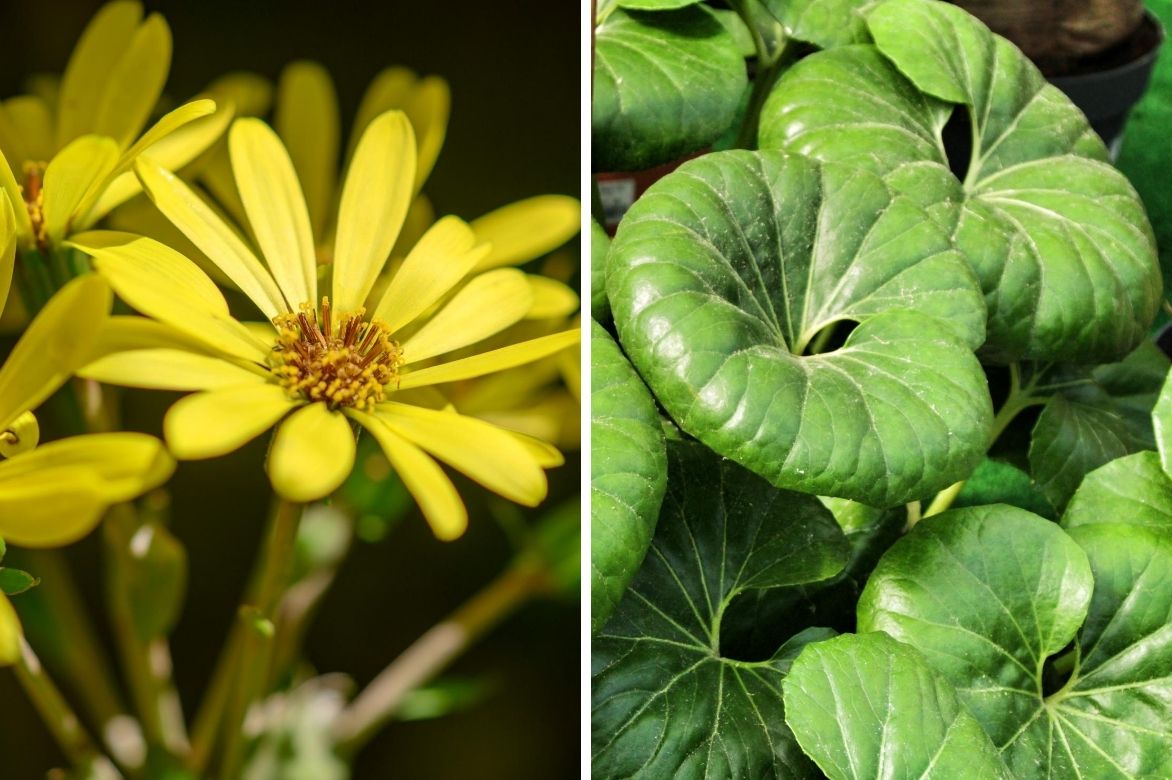
Farfugium japonicum: flowers and leaves
The main species and varieties of Farfugium
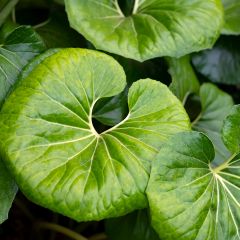
Farfugium japonicum
- Flowering time November, December
- Height at maturity 60 cm
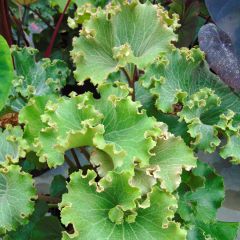
Farfugium japonicum Crispata
- Flowering time November, December
- Height at maturity 50 cm
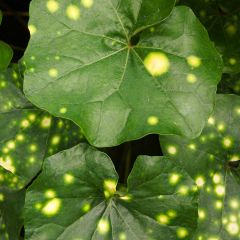
Farfugium japonicum Aureomaculatum
- Flowering time November, December
- Height at maturity 60 cm
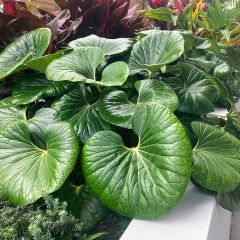
Farfugium japonicum Gigantea
- Flowering time November, December
- Height at maturity 80 cm
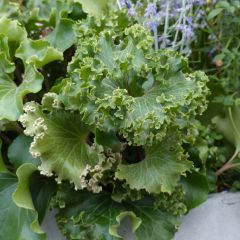
Farfugium japonicum Wavy Gravy
- Flowering time November, December
- Height at maturity 55 cm
Discover other Farfugium
View all →Available in 1 sizes
Available in 1 sizes
Available in 1 sizes
Available in 2 sizes
Available in 1 sizes
Planting Farfugium
Where to plant?
Regarding exposure, panther plants are perennials for shade or partial shade, especially in pots. The sun damages the foliage, which tends to wilt. Wind can also harm the foliage, so consider protecting the plant from it.
The soil must be rich and humus-bearing, remaining cool and slightly moist. The plant is indifferent to pH.
When to plant?
Planting is preferably done in spring in April or early autumn, during September and October.
How to plant in the ground?
Planting is done like most perennials.
- Dig a hole twice the depth and twice the width of the root ball.
- Add some well-rotted compost to the bottom of the hole, as the plant appreciates rich soils that retain water well.
- Remove the plant from its pot and place it at the bottom of the hole. Ensure the top of the root ball is level with the soil surface. If buried too deeply, the plant may rot.
- Backfill the hole with loosened soil and firm it well around the edges of the plant.
- Water thoroughly.
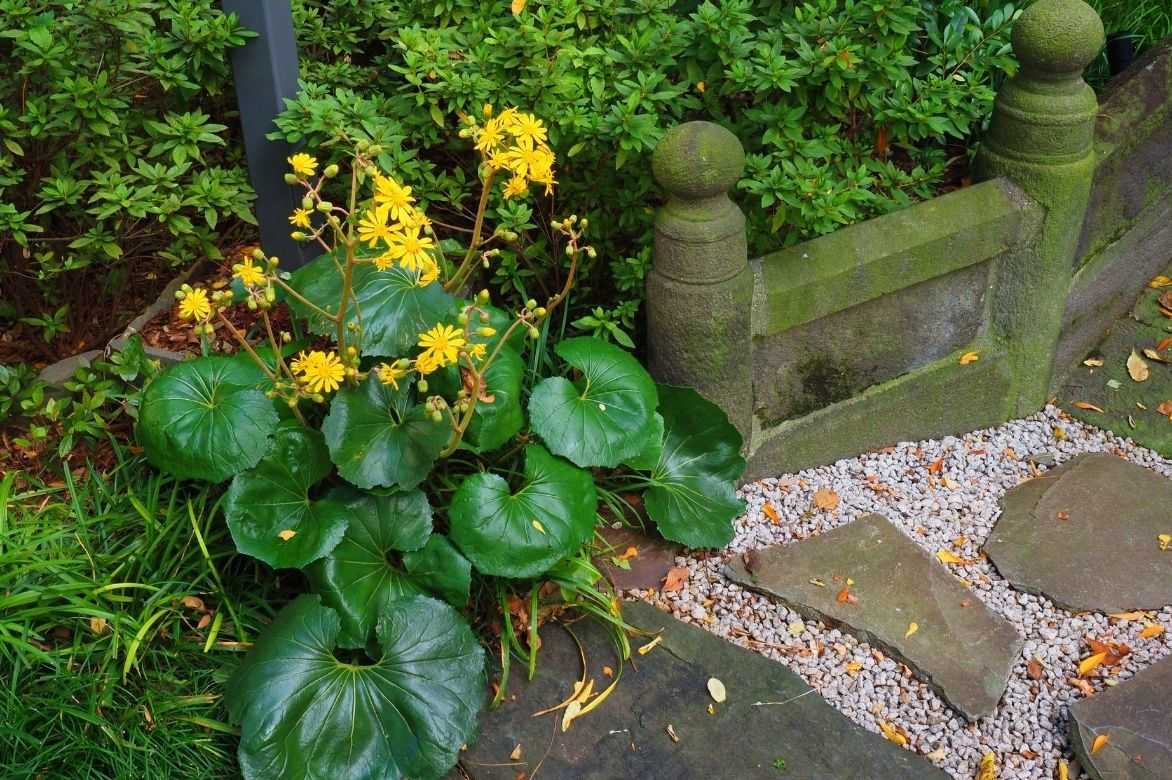 Farfugium japonicum, perfect for a shaded and moist area
Farfugium japonicum, perfect for a shaded and moist area
How to plant in a pot?
- Choose a large pot of at least 30-40 cm, as the plant will fill it quickly.
- Place a layer of clay balls or other draining materials at the bottom of the pot.
- Mix 2/3 of potting soil or garden soil with 1/3 of compost.
- Remove the plant from its pot and place it in the pot, filling in the gaps with substrate.
- Water well and place in a shaded area.
- At the very beginning of spring, apply fertiliser or well-rotted compost.
- Repot every 2 or 3 years when the plant starts to feel cramped.
→ Learn more in Gwenaëlle’s article on growing Farfugium in a pot
Maintenance and care
Don’t Neglect watering!
Especially in the year following planting and during the hottest and driest months. Remember that Farfugium loves moist soils!
Care
The plant is only hardy down to -10°C, and the foliage disappears at -7°C. However, there’s no need to panic; it will return the following spring. But in autumn, protect the stump well with a thick mulch or if your panther plant is grown in a pot, bring the pot into a cold greenhouse (a non-heated conservatory, for example). In spring, a supply of well-rotted compost or decomposed horse manure or pellets will be greatly appreciated.
You can cut the flower spikes when the flowers fade in late autumn. Some gardeners prefer to sacrifice flowering altogether to highlight the foliage. It’s up to you! (but I personally find that a shame…).
→ Also read our tips in Farfugium: how to protect it from the cold and winter it?
Pests and potential diseases
No diseases attack panther plants.
Beware! Like ligularias, their close botanical relatives, Farfugium seems to attract slugs and snails like a magnet. So keep an eye out and protect your perennials accordingly! Discover our advice sheet: Slugs: 7 ways to fight effectively and naturally.
Multiplication of Farfugium
Forget about sowing or any cuttings; instead, prioritise clump division in April.
In fact, Farfugium produces rootstocks that spread away from the original clump. The simplest method is to locate one of these rootstocks and cut it with a spade or knife before replanting it elsewhere.
Please note that sowing is possible, but only for the species type; the varieties will not be faithfully reproduced.
→ Learn more in our tutorial: Multiplying Farfugium
How to pair Farfugium?
In damp woodlands
Beneath a few trees providing beneficial shade, your garden offers a very humus-bearing soil. Additionally, a water feature nearby provides a pleasant humidity in the atmosphere as well as in the soil. This is the perfect spot to host a Farfugium japonicum ‘Gigantea’ with its large, somewhat exotic leaves. Why not accompany it with beautiful tree ferns, whose finely divided fronds will contrast strongly with the foliage of the panther plant. Pair them with a Cycas revoluta and a Black Elderberry to add a bit of contrast to all that green.
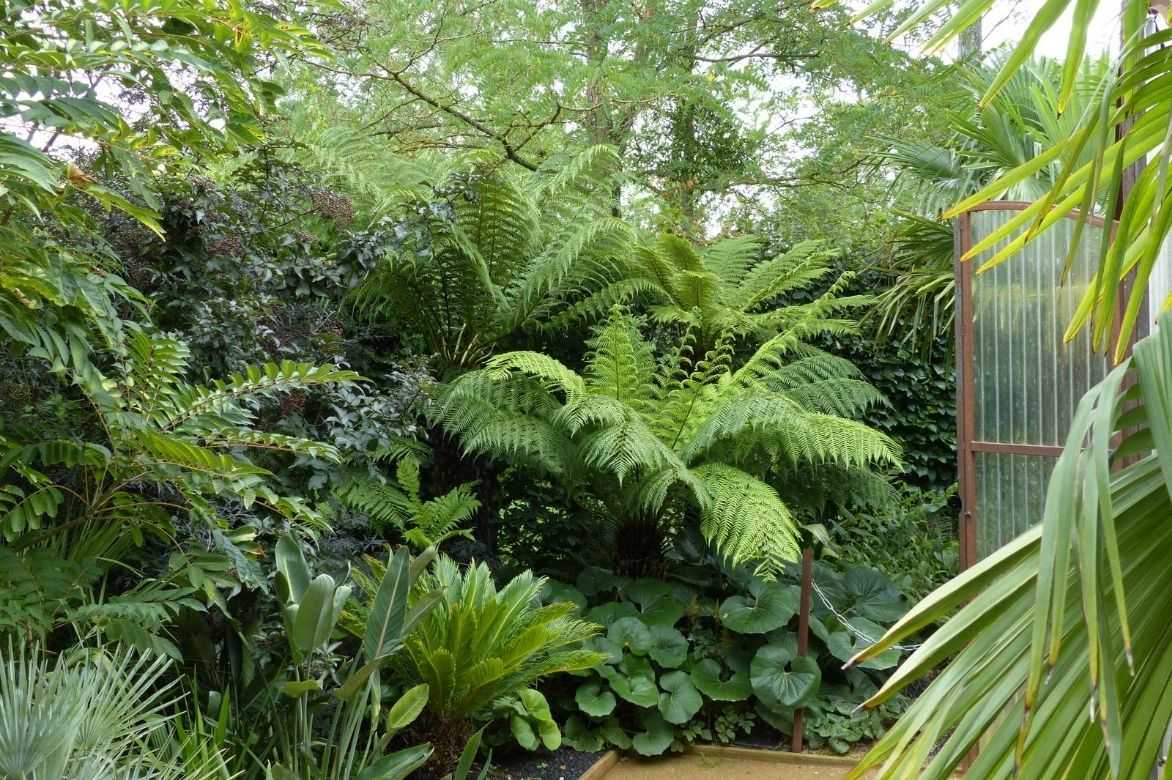
An idea for an exotic combination: Tree fern, Sambucus nigra ‘Black Beauty’, Cycas revoluta, and Farfugium japonicum ‘Gigantea’
Another idea would be to accompany the autumn flowering of the Farfugium with a “companion from Japan,” which would be an excellent choice. An Actea japonica ‘Cheju-Do’ with its frosty silver foliage in spring and multiple upright, delicate white spikes. Staying with Japan and autumn blooms, consider this lovely Japanese Anemone ‘Rubra Plena’ with its semi-double dark pink flowers. Finally, let’s not forget a beautiful contrast of shape and foliage colour with some clumps of Japanese sedge, Carex morrowii ‘Aureomarginata’, with its soft, evergreen foliage, strongly marginate in yellow and green, which will brighten the darkest corners of the garden.
In pots in the shade
Are winters in your area too harsh to grow Farfugium in the ground? No worries, they thrive very well in large pots that can be stored in a cold greenhouse during winter. In the meantime, this will be an opportunity for a small scene of perennials that enjoy shaded and damp environments and do not mind being grown in pots. The Farfugium japonicum ‘Crispata’ is a rare form, with intensely undulate edges and, moreover, is more compact in growth than the typical species, reaching no more than fifty centimetres in all directions. A beautiful clump of Japanese grass, Hakonechloa macra ‘Aureola’, with its magnificent arching foliage variegated in green and gold, will keep it company. There will also be room for a mini-collection of Hostas with varied foliage, such as: Hosta ‘Morning Light’, Hosta ‘Rainbow End’, and Hosta ‘Clifford’s Forest Fire’. To finish, you could place a beautiful pot of ligularia, the close cousin of Farfugium, in the form of a Ligularia stenocephala, with its slender and long spikes of tiny yellow flowers borne on dark brown stems emerging from a massive clump of glossy, heart-shaped leaves.
→ Discover more inspirations for pairing Farfugium
Useful resources
- Find all our Farfugium – leopard plant in our online nursery.
- Our article: 5 perennials with XXL foliage
- Our article: 6 pairing ideas with Farfugium
- Our tutorial: Propagate Farfugium
- Our article: growing Farfugium in a pot
- Subscribe!
- Contents
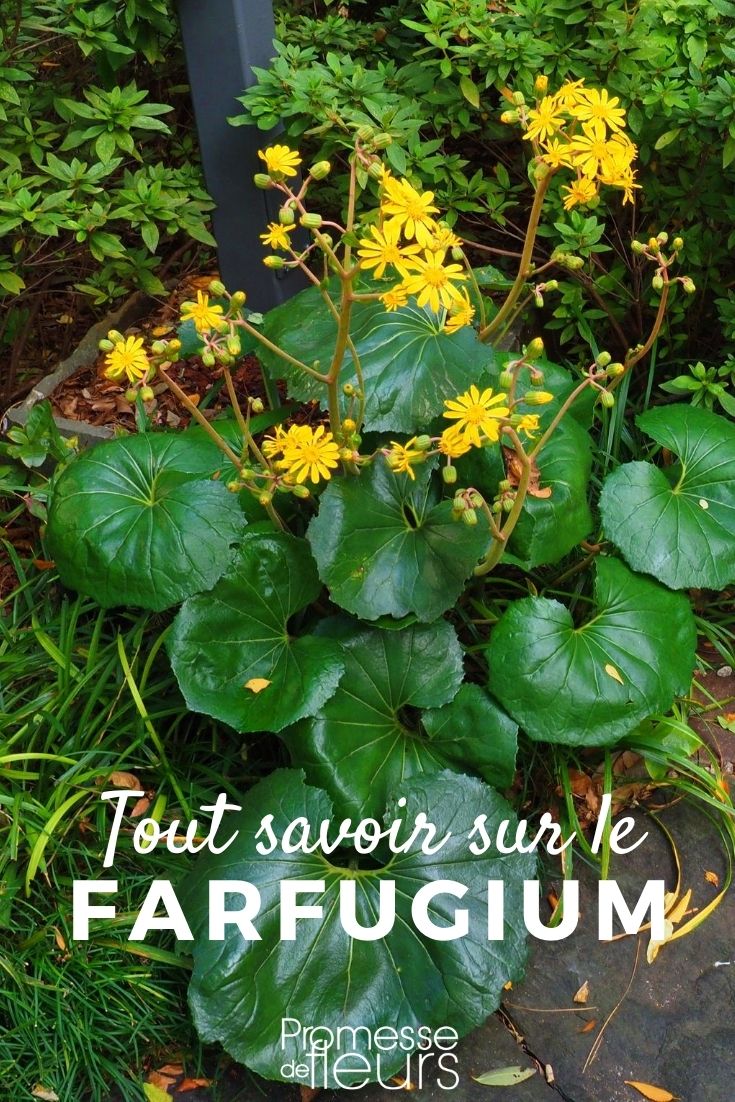




































Comments